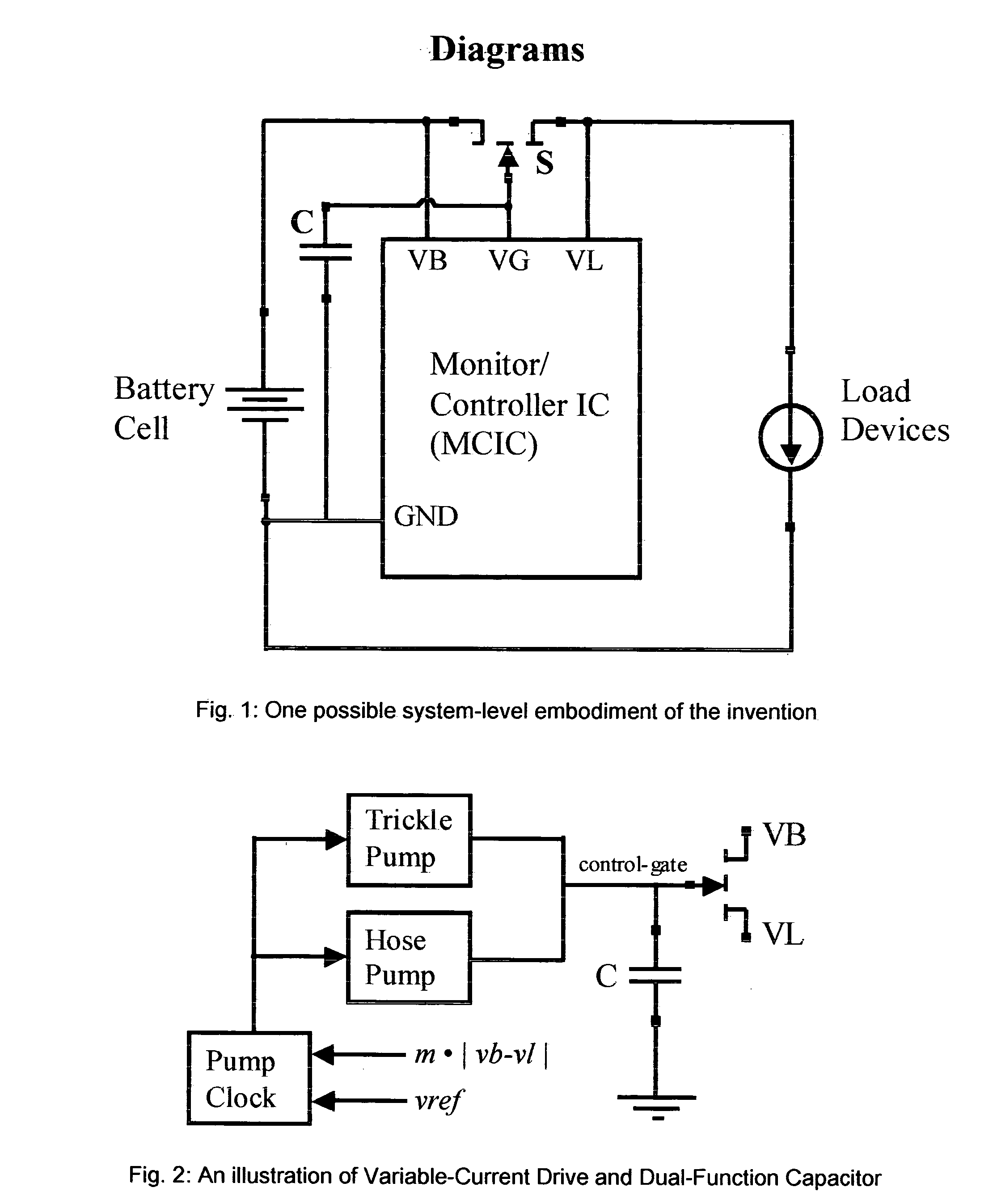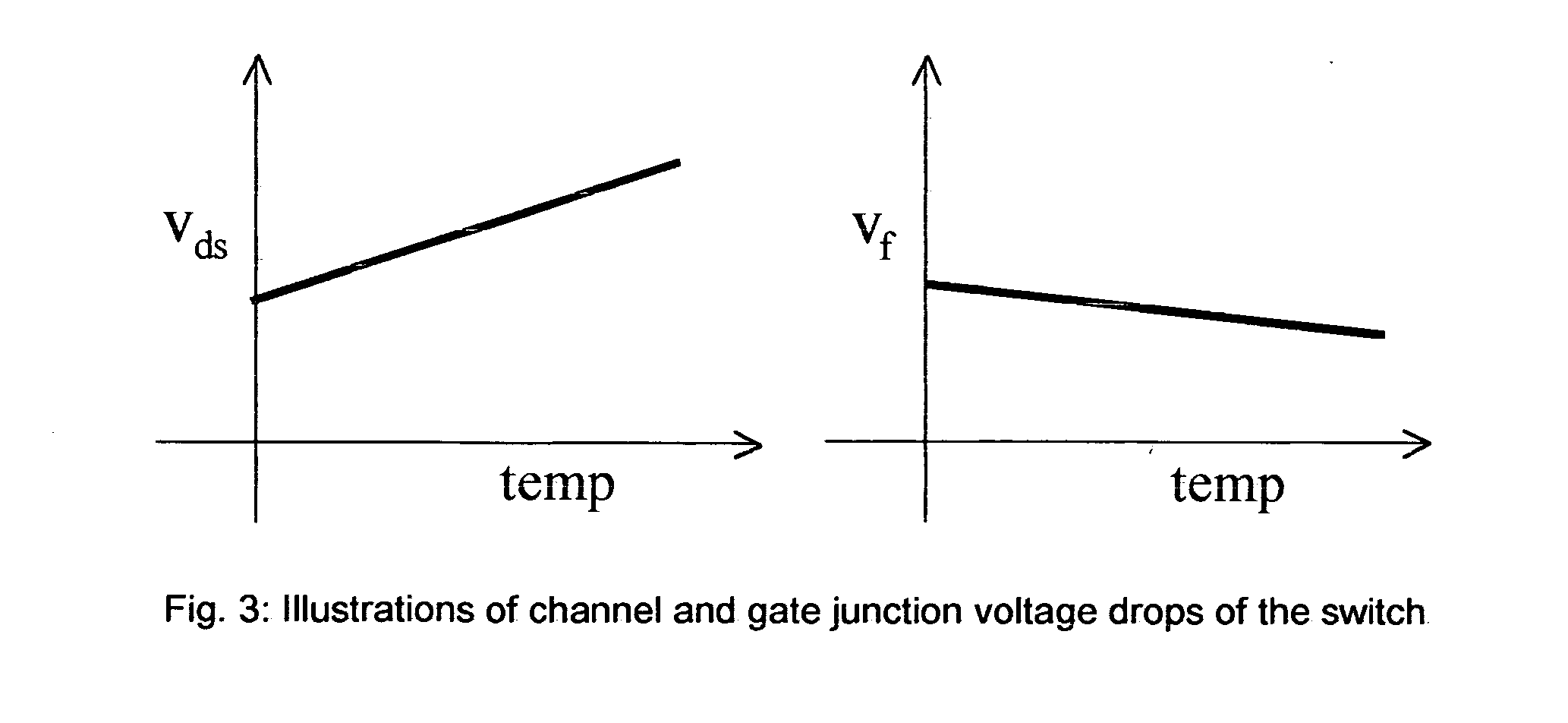Method & apparatus for charging, discharging and protection of electronic battery cells
a technology for electronic batteries and charging devices, applied in the field of electronic circuitry, can solve the problems of increased complexity of external components, unsatisfactory solution of battery packs, and inability to charge, discharge and protect electronic batteries
- Summary
- Abstract
- Description
- Claims
- Application Information
AI Technical Summary
Benefits of technology
Problems solved by technology
Method used
Image
Examples
Embodiment Construction
FIG. 1 shows key differences between the system embodiment and the prior art that include: 1. An enhancement-mode JFET employed as the switch device interrupting the battery cell circuit path within the battery pack, 2. The use of a capacitor connected to the control gate of the JFET switch device, 3. The elimination of a current measurement resistance in the batter cell circuit path, and 4. A Monitor / Controller integrated circuit (MCIC) with a reduced number of external pins.
Dual-Function Capacitor
A key concept within the architecture of the invention is the use of a single external (potentially integrated monolithically) capacitor for two important functions. The capacitor C in FIG. 1 is connected to the control gate of the switch device S with a value determined by operating parameters. The two functions of the capacitor are: 1. A filter / charge reservoir function for the output of the drive circuits connecting to the control gate of the switch device and 2. A delay eleme...
PUM
 Login to View More
Login to View More Abstract
Description
Claims
Application Information
 Login to View More
Login to View More - R&D
- Intellectual Property
- Life Sciences
- Materials
- Tech Scout
- Unparalleled Data Quality
- Higher Quality Content
- 60% Fewer Hallucinations
Browse by: Latest US Patents, China's latest patents, Technical Efficacy Thesaurus, Application Domain, Technology Topic, Popular Technical Reports.
© 2025 PatSnap. All rights reserved.Legal|Privacy policy|Modern Slavery Act Transparency Statement|Sitemap|About US| Contact US: help@patsnap.com


